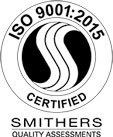As the demand for quality plastic packaging increased, manufacturers began to see that their products were only as good as the tools they used. Specifically, the quality of the molds determined the appearance and durability of the plastic packaging produced. From this realization came the need for plastic mold polishing.
Mold polishing is the last step in the production of mold tooling, and if it is skipped or not done to perfection, the quality of the molds produced will be subpar. By understanding how plastic mold polishing works and why it is important, you will be able to make quality packaging for your products.
What Exactly Is Mold Polishing?
Plastic mold polishing is necessary for obtaining smooth mold surfaces, removing tool lines and specific finishes on the final product. Parts of the mold are removed through deformation and cutting. The process may be mechanical, chemical, electrolytic, ultrasonic, fluid, or magnetic, depending on the type of finish desired.
The Society of the Plastics Industry (SPI) has set the standards for plastic manufacturing in the U.S. One standard they established involves the finish of plastic parts. There are twelve grades of finishes that describe plastic surfaces on a scale from shiny to dull. Special polishing tools are needed to achieve a high-quality, mirror-like surface finish worthy of an A-1 SPI rating. At Munot Plastics, we use A-1 diamond polished tools to produce unmatched plastic packaging for a variety of industries.
The Importance of Plastic Mold Polishing
When manufacturing molding tools for plastic items, the utmost care must be taken. This is because the mold’s quality not only affects the quality of the plastic part but also influences how easy or how difficult it is to manufacture these plastic components.
As we mentioned earlier, a smooth mold surface produces a product with an appealing appearance. This can make it easier to market and display everything from medications to children’s toys in plastic packaging.
Additionally, polishing the mold allows easier ejection of the plastic part from the mold. When the mold is smooth and free of burrs and blemishes, the plastic is less likely to stick on the mold. Therefore, the molder will be able to remove the plastic material without worrying about creating ugly molding defects. When the plastic part is removed easily from the mold and is made correctly the first time, production can run much more quickly, saving money overall.
Types of Plastic Mold Polishing Techniques
Plastic mold polishing can be completed in six different ways, depending on the grade of finish a manufacturer wants to achieve. These methods are:
- Mechanical Polishing: This process removes convex parts on the mold’s surface using materials like sandpaper, wool wheels, oilstones, or diamond-tipped cutters at high-speed rotations. Mechanical mold polishing achieves the lowest surface roughness possible according to SPI standards.
- Chemical Polishing: This technique requires soaking the mold material in a chemical substance to smooth the material's surface. It is suitable for parts with complicated shapes.
- Electrolytic Polishing: This type of mold polishing involves selectively dissolving parts of the surface to achieve a smooth finish.
- Ultrasonic Polishing: With this type of polishing, the material is soaked in an abrasive suspension and then placed in an ultrasonic field. The mold’s surface is ground and polished with ultrasonic waves.
- Fluid Polishing: This technique involves blasting fluid with abrasive materials across the mold surface.
- Magnetic Polishing: This process grinds the mold’s surface using magnetic abrasives under the influence of the magnetic field.
Choose High-Grade Polishing Techniques for Your Plastic Packaging
Because of the value plastic polishing provides, choosing a manufacturer that properly prepares its tools is vital. At Munot Plastics, we offer A1 diamond polishing services to ensure the production of aesthetically pleasing and high-quality plastic parts. For everything from plastic blisters and thermoformed packaging trays to outsourced manufacturing, contact our team today!


